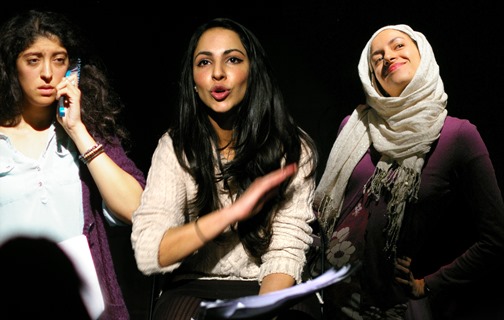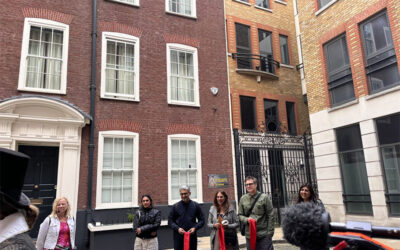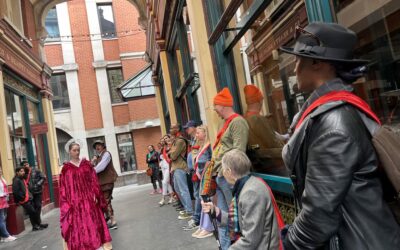Kali Theatre
Rich Mix, London
19th April 2015
Reviewed by Sita Thomas
I went to Kali Theatre’s sold out production of Twelve at Rich Mix compelled by the array of writing talent in the programme. Kali is a company dedicated to new writing by South Asian women, and artistic director Janet Steel had conceived of an evening where twelve writers each contributed a monologue inspired by stories of honour killings in Britain.
As excited as I was to see the work of these writers including Tanika Gupta, Nessah Muthy and Yasmeen Khan – whose work I have previously seen and admired – I was not particularly enthused about the subject matter. I am well-versed in conversations with British Asian actors who despair about playing the same role again and again: the victim Asian woman – quiet, submissive, forced into marriage and often killed. ‘I want to tell different stories’ they argue.
When the first monologue began I was worried. Harvey Virdi was playing the title role in ‘The Mother’ by Amber Lone. I have recently seen Harvey playing a similar role – a mother who kills her daughter for izzat in the film Honour. Is this the only – potentially stereotypical – role this actress is cast to play?
Happily Harvey returned several times in the evening, demonstrating her versatility. She played ‘The Father’, also by Amber Lone, and gave the final powerful words in ‘The Wink of Execution’ by Yasmin Whittaker-Khan. This was a brutal and honest account of a woman whose mother was killed and who asked not for sympathy, but a change in attitudes so that future generations of women would not have to live in fear that they would be murdered at the hands of their family.
A broad range of perspectives
As the programme progressed it became clear that Janet Steel had commissioned writers to examine the issue from a broad range of perspectives – such as an injured police officer in Tanika Gupta’s ‘Alfie’, assigned to saving young women from these dangerously delicate situations, tormented by a case where he was unable to save the woman. The sounds of recorded plea for help by a young woman reverberated in the space, the screams of her child raging in the background as she was engulfed by the flames of a fire set on her by her family to purge their sense of dishonour.
As dark as these stories were, Steel’s deft handling of the texts saw the stories interspersed with humour. This is where I found the piece most powerful. Through the nuanced characterisations of Amina Zia – who transformed herself in accent, age and body alignment –characters from different backgrounds were brought to life. She played a range of women, from a newly-arrived immigrant to a second-generation doctor. Amina was compelling to watch – always truthful, with a glint of steely grit as well as playfulness in her eyes. The moments of comedy prevented the monologues from feeling too pitiful and encouraged us to engage deeply with the characters, thus making the dénouements all the more hard-hitting.
Anu Kumar’s ‘Cockney School Girl’
My favourite story was told by Aryana Ramkhalawon in Anu Kumar’s ‘Cockney School Girl’. Aryana strutted in heels, a handbag slung on her arm, her hijab decorated with glittering bling. Speaking in an urban East London accent, this was a modern Muslim girl that I recognized from first-hand experiences. Aryana’s interpretation was funny and full of spunk and attitude. This cockney schoolgirl was speaking on behalf of a friend who was locked away by her family. The piece suggested that for every modern Asian girl, acculturated and making her own way through contemporary Britain, there are those girls we don’t see, hidden away by their families, their promise stoppered and hindered by backwards ideals about women’s roles in society.
The monologues were woven together through deftly symbolic transitions. Each character would leave an object on a table significant to their story – such as an apple, the symbol of the dirtied girl, fallen far from the tree, bruised, sold for consumption and cut up by the owners. Movement also played an important role in the storytelling. Choreographed by Sheema Kermani who danced in the piece with Patience James, the two represented different relationships, with Patience as the unbridled free spirit of the girls who lost their lives, and Sheema as the nurturer, a spirit who guided the characters into the space to tell their stories. There seemed to be an African influence in Patience’s movement and she thrust her chest and pelvis and swung her head in circular abandonment. I wondered whether this offered a kind of alternative to the traditions of South Asian culture and heritage and demonstrated how the girls’ transgression was seen as a kind of ‘other’ culture that did not fit with the prescribed hierarchies and systems of izzat ingrained behind closed doors of these families.
Much promise and power shown by all women involved
I left the theatre with the sense of disgust and sadness that indeed on average twelve cases of honour killings are reported in Britain every year. Although some of the offerings left one feeling a bit hopeless, the piece did raise awareness about the plight of such women. Much promise and power was shown by all of the women involved in the evening, including the writers, actors and creative team, and I look forward to the exploration of many different facets of British Asian experiences in Kali’s future work.



